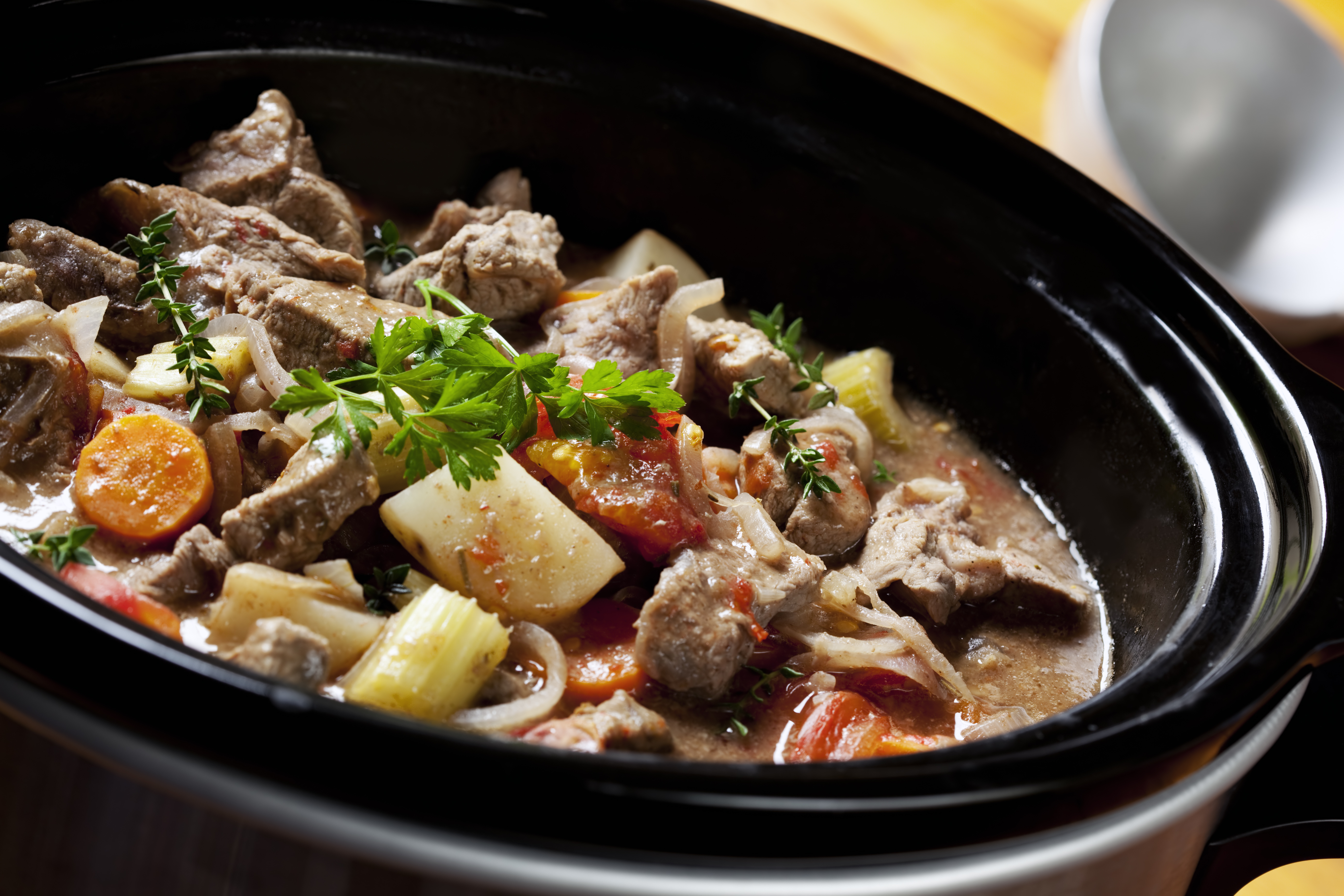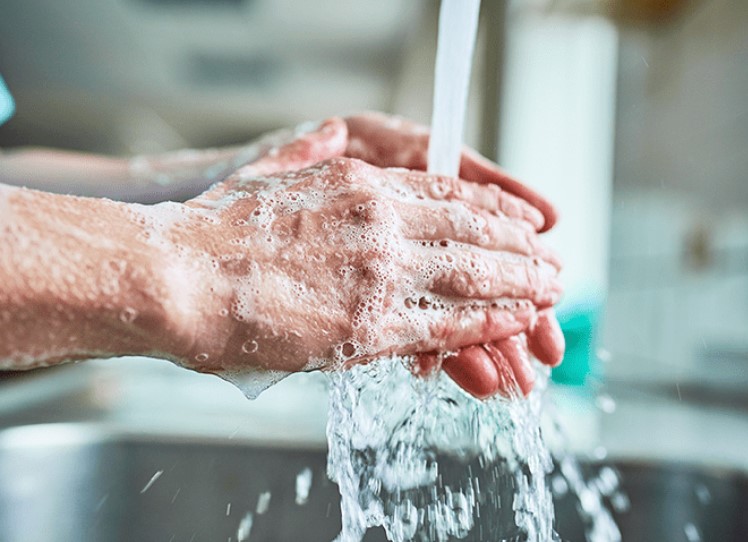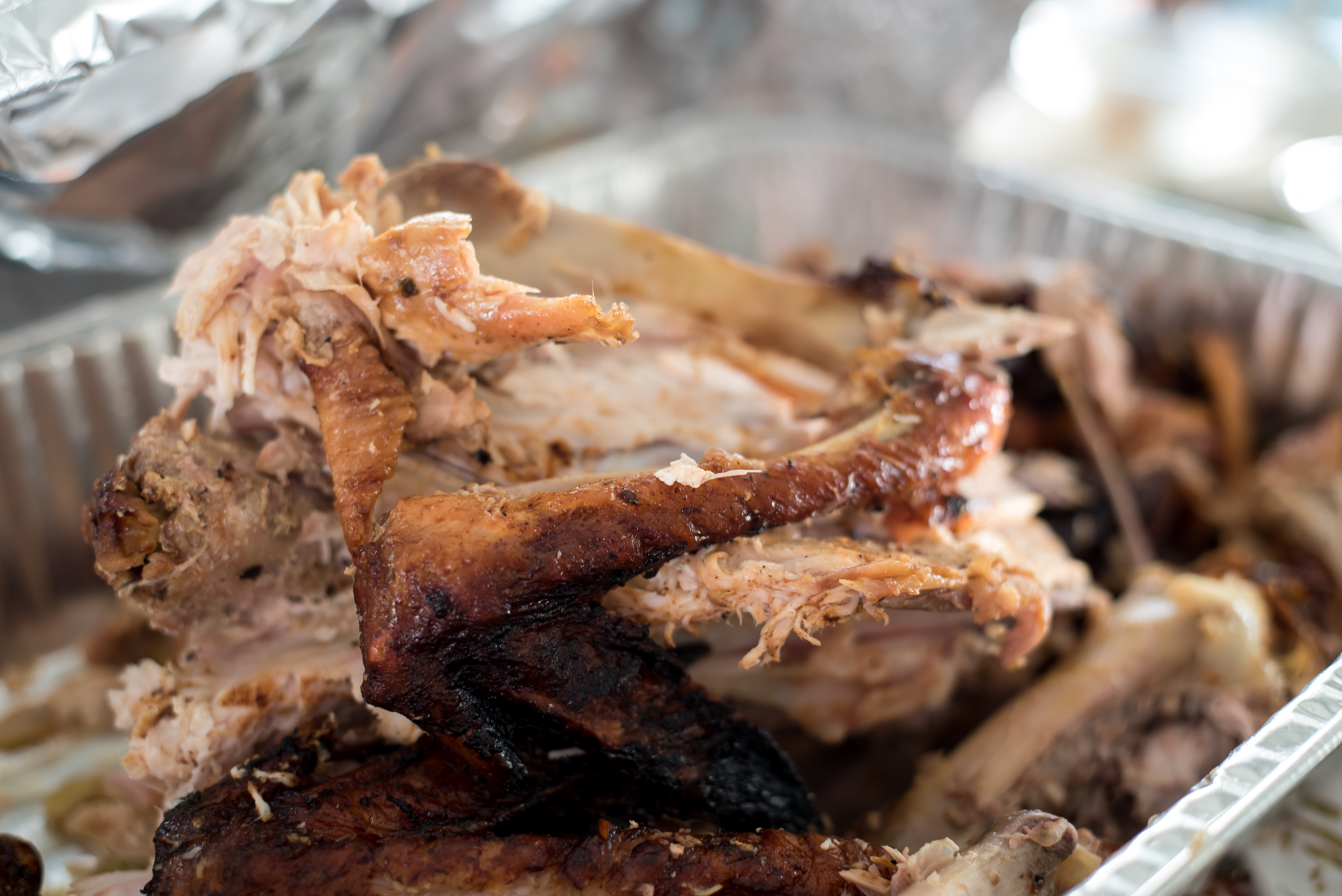
Poultry: Basting, Brining, and Marinating
People are always on the lookout for new and interesting ways to prepare old standards like chicken and turkey. Several methods have become popular in recent years. These involve the use of a liquid to change or improve the flavor, taste, tenderness, or texture of poultry. Various liquids can be added to poultry by several methods such as injection, marinating, brining, or basting. Consumers can purchase raw poultry products that have already been marinated, basted, or brined.
Marinating
The verb "marinate" means to steep food in a marinade. A marinade is a savory acidic sauce in which a food is soaked to enrich its flavor or to tenderize it.
According to Woman's Day Encyclopedia of Cookery, "Marinades began as simple brines for preserving fish. The word marinade stems from the same root as the word maritime. In modern usage, a marinade consists of a cooking oil, an acid (vinegar, lemon juice, wine), and spices. As the food stands in the mixture, the acid and the oil impart the savory flavors of the spices to the food. The acid also has a tenderizing action."
The acid in marinades causes poultry tissue to break down. This has a tenderizing effect. The breaking down of the tissue also causes the poultry to hold more liquid, making it juicier. Too much vinegar or hot sauce in a marinade can have the opposite effect, causing the meat to be stringy and tough.
Brining
The verb "brine" means to treat with or steep in brine. Brine is a strong solution of water and salt. A sweetener such as sugar, molasses, honey, or corn syrup may be added to the solution for flavor and to improve browning.
The salt has two effects on poultry, reports Dr. Alan Sams, Executive Associate Dean of the College of Agriculture and Life Sciences at Texas A&M University. "It dissolves protein in muscle, and the salt and protein reduce moisture loss during cooking. This makes the meat juicer, more tender, and improves the flavor. The low levels of salt enhance the other natural flavors of poultry."
Dry brining is an easy alternative to traditional liquid brining methods. The technique seasons the meat with salt and spices without the use of a liquid.
This two-day process, completed in the refrigerator in a food-grade plastic bag, drains moisture out of the poultry, creating a flavorful brine, which is then reabsorbed into the meat without adding additional water.
Basting
The verb "baste" means to moisten meat or other food while cooking. Melted butter or other fat, meat drippings, or liquid such as a stock is spooned or brushed on food as it cooks to moisten it. A bulb baster can also be used to drizzle the liquid over the food. Basting adds flavor and color and prevents poultry from drying out.
Consumers can purchase raw poultry products that have already been marinated or brined. These products have been injected or marinated with a solution containing butter or other edible fat, broth, stock, or water, plus spices, flavor enhancers, colorings, or other approved ingredients. If you see terms such as "self-basting," "marinated," or "for flavoring" on a raw poultry label, a solution has been added during processing — up to 3% by weight for bone-in poultry and up to 8% by weight for boneless poultry.
Safe Preparation
Marinating. Whole poultry or poultry parts may be marinated by completely immersing the poultry in the marinade. To help infuse the marinade into the poultry, you may use a fork to make random holes in the meat. A needle-like injector may also be used.
Poultry can be refrigerated for up to 2 days in a marinade. For easy cleanup, use food-grade plastic bags for marinating and discard the bags afterwards. Food-grade plastic, stainless steel or glass containers may also be used to marinate food. Cover poultry while marinating it in the refrigerator. Do not use marinade from raw poultry as a sauce unless it is boiled first to destroy bacteria. If stuffing poultry, marinate the poultry first. Cook immediately after stuffing.
Brining. To prepare a brine solution for poultry, add ¾ cup salt to 1 gallon of water, or three tablespoons of salt per quart of water. For best flavor, use sodium chloride-table salt. Add sweetener if desired. Place brining solution in food-grade plastic, stainless steel or glass containers. Totally submerge poultry in solution and store covered in the refrigerator. For best results, refrigerate at least overnight. Poultry may be left in the refrigerator up to 2 days after thawed or purchased fresh. Remove poultry from brine. Discard brine after use. If stuffing a bird, brine the poultry first. Cook immediately after stuffing.
To prepare a dry brine, measure 1 tablespoon of kosher salt, or seasoned salt for every 5 pounds of poultry. Additional aromatic ingredients may be added to the dry brine such as herbs, spices, citrus or garlic. Rub the dry brine mixture over the entire surface area of the poultry, place the poultry in a food-grade plastic bag, press out the air and seal tightly. For best results, refrigerate for up to 2 days and massage the mixture into the skin of the poultry every 8 to 12 hours. Remove poultry from bag, pat dry with a paper towel and cook to a safe internal temperature of 165 degrees F.
Basting. If basting poultry while it is roasting, remember that each time the oven door is opened, the oven temperature is lowered and additional cooking time may be needed. Always use clean utensils to avoid cross-contamination.
General Poultry Preparation Information
Safe Cooking. Set oven temperature no lower than 325 degrees F. Whole poultry and parts are safe cooked to a safe minimum internal temperature of 165 degrees F as measured with a food thermometer. Check the internal temperature in the innermost part of the thigh and wing and the thickest part of the breast. For reasons of personal preference, consumers may choose to cook poultry to higher temperatures.
For optimum safety, do not stuff whole poultry. If stuffing whole poultry, the center of the stuffing must reach a safe minimum internal temperature of 165 degrees F.
Storing Leftovers. Remove any stuffing and cut whole or large pieces of poultry into small pieces. Refrigerate leftovers in shallow containers within 2 hours of cooking. Use leftover poultry and stuffing within 3 to 4 days, or freeze these foods. Reheat all leftovers thoroughly to a temperature of 165 degrees F.



